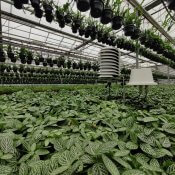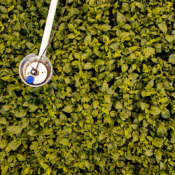Can smart sensing prevent potato rot and blight?
This past week, the 30MHz UK team had the opportunity to join Agritech-East for its annual REAP event. Throughout the day of talks, we saw first-hand just how important a role technology can (and must!) play in creating a sustainable, productive and profitable future for agriculture. But if technology is going to make farmers’ jobs easier, it needs to be usable, easy to deploy, and show immediate value.
The real power of out of the box, plug and play technology is its ability to make a difference to a farmer’s bottom line within days of use. Smart sensing technology deploys in minutes, and starts generating insights within moments of deployment. Customers like Van Lipzig Tuinderijen have seen quick results from real-time monitoring, wasting no time on deployment or implementation. Van Lipzig adapted its cucumber screening strategy based on actionable data two days into measuring. A week into monitoring, the company identified opportunities to lower greenhouse temperatures and save energy. Accurate, real-time monitoring of crop and environmental conditions can improve productivity and cut losses with significant return on investment– and it all begins with the simple opportunities for automating measurement, the “low hanging fruit.”
Preventing unnecessary potato loss
As we heard at the REAP conference, £100 million worth of potatoes are lost in the UK annually from bruising. £100 million is lost from potato blight. According to Growing Produce, the U.S. potato industry estimates losses during the storage of potatoes at 7%. How can technology help prevent unnecessary potato losses?
According to the University of Idaho, optimising temperature and humidity during potato storage “is critical for rapid wound healing, which reduces the harm from shatter bruise and skinning” while offsetting the potential for decay and moisture-borne disease. Wireless sensors monitoring temperature and humidity are already helping the Dutch flower bulb industry reduce fungus and rot during processing and storage, could the same real-time data ensure more potatoes reach grocery stores?

Developed for the needs of commercial farmers, the temperature humidity sensor is designed to provide real-time granular data on environmental conditions from any location, whether it’s the furthest corner of a greenhouse or a sealed cold storage container. Read more about the pointed temperature sensor here.


30MHz is typing… Our extended support team is ready to chat!
At 30MHz we think it’s important that our users can use our platform in an optimal way. At times you may have questions and you would like some help from our support team. Email and our support page filled with helpful articles were your go to’s. But we thought it was time for something extra… ...Read more
New 30MHz connect casing: How we protect your tech
To make sure your dataflow is fully protected, 30MHz introduces a new connect casing: waterproof, dust proof and even resistant to hits. This special shield will last longer and ensure a reliable dataflow from the connected sensor. What does that full protection mean? That’s what we will explain in this article. Watertight: resistant to wetness ...Read more
Most popular sensors for your greenhouse
As a grower, you know that optimal crop development starts with precise monitoring of your cultivation environment. But how do you transform raw data into actionable insights for your crops? This is where our wireless sensors and the 30MHz platform come together. Our sensors measure essential variables such as VPD, dew point, moisture deficit, EC, ...Read more


